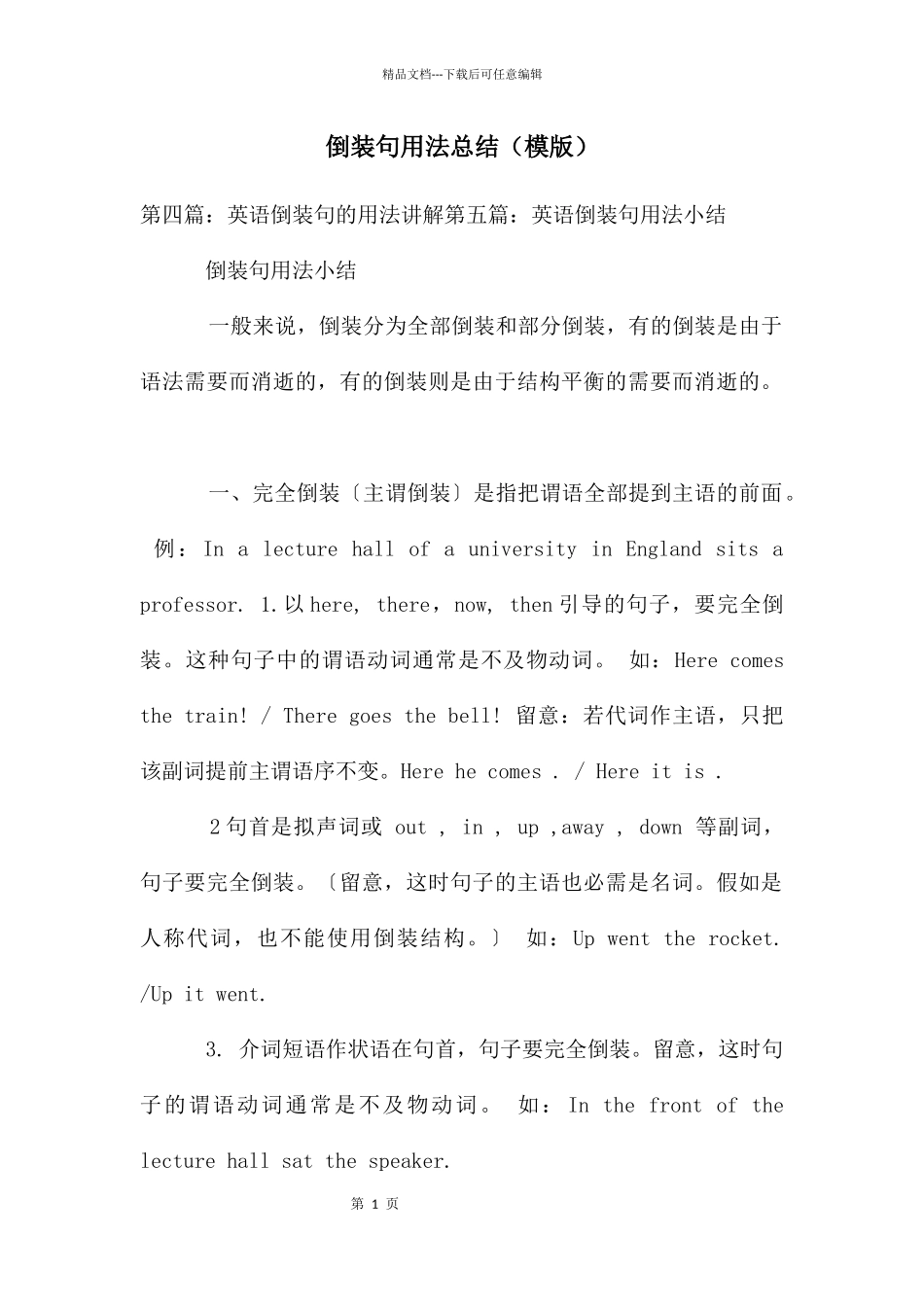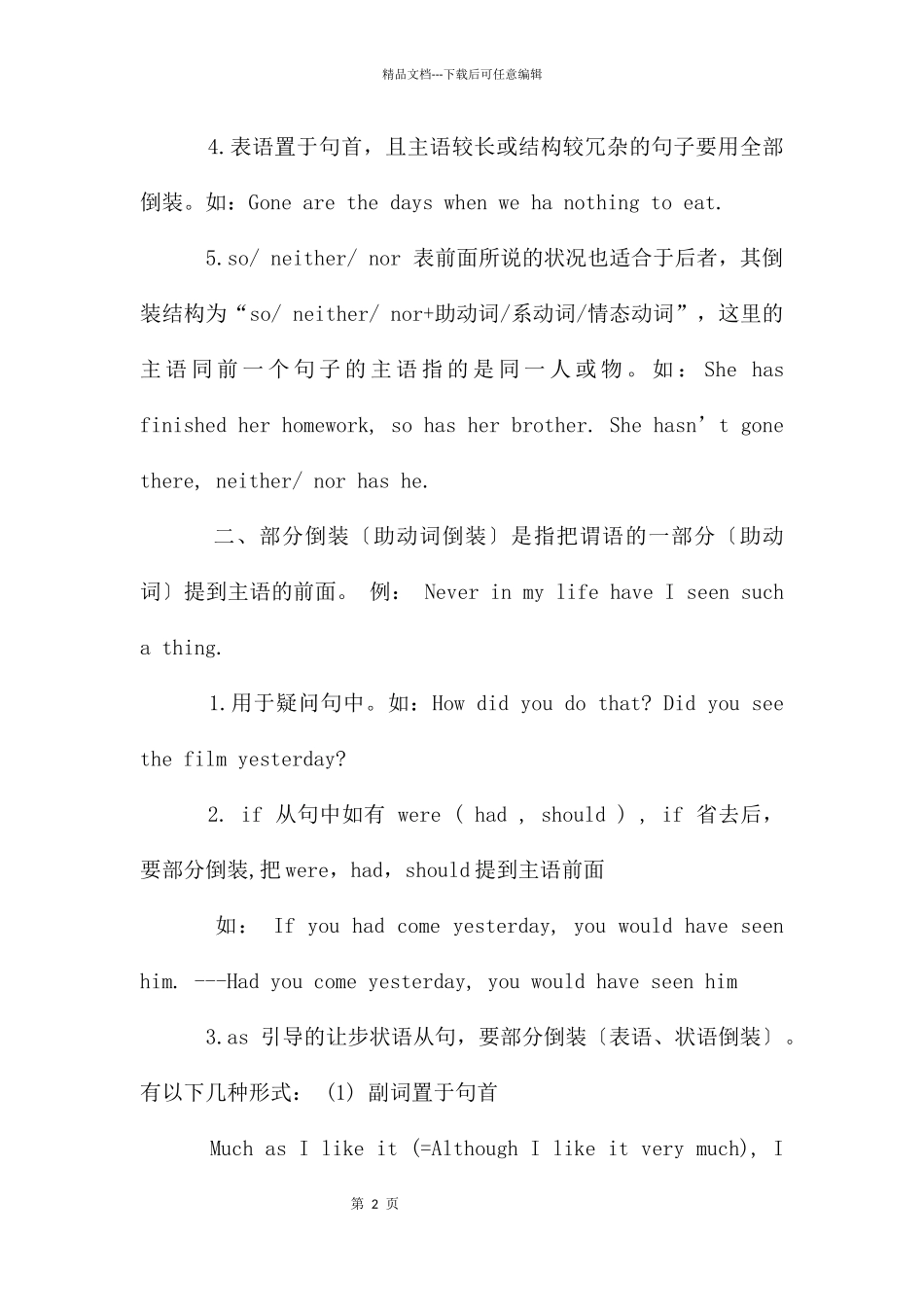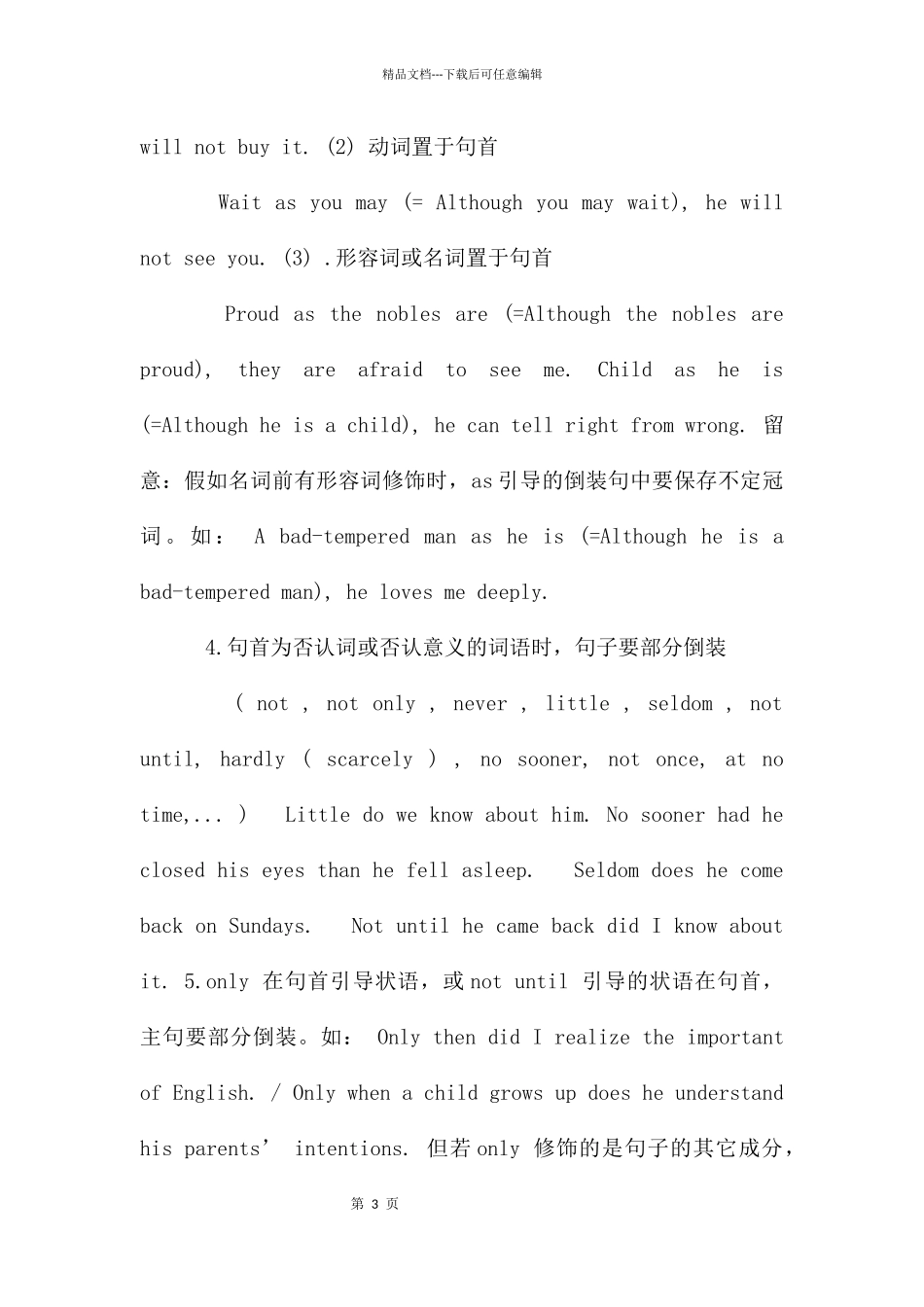第 1 页精品文档---下载后可任意编辑倒装句用法总结(模版) 第四篇:英语倒装句的用法讲解第五篇:英语倒装句用法小结 倒装句用法小结 一般来说,倒装分为全部倒装和部分倒装,有的倒装是由于语法需要而消逝的,有的倒装则是由于结构平衡的需要而消逝的。 一、完全倒装〔主谓倒装〕是指把谓语全部提到主语的前面。 例:In a lecture hall of a university in England sits a professor. 1.以 here, there,now, then 引导的句子,要完全倒装。这种句子中的谓语动词通常是不及物动词。 如:Here comes the train! / There goes the bell! 留意:若代词作主语,只把该副词提前主谓语序不变。Here he comes . / Here it is . 2 句首是拟声词或 out , in , up ,away , down 等副词,句子要完全倒装。〔留意,这时句子的主语也必需是名词。假如是人称代词,也不能使用倒装结构。〕 如:Up went the rocket. /Up it went. 3. 介词短语作状语在句首,句子要完全倒装。留意,这时句子的谓语动词通常是不及物动词。 如: In the front of the lecture hall sat the speaker. 第 2 页精品文档---下载后可任意编辑 4.表语置于句首,且主语较长或结构较冗杂的句子要用全部倒装。如:Gone are the days when we ha nothing to eat. 5.so/ neither/ nor 表前面所说的状况也适合于后者,其倒装结构为“so/ neither/ nor+助动词/系动词/情态动词”,这里的主 语 同 前 一 个 句 子 的 主 语 指 的 是 同 一 人 或 物 。 如 : She has finished her homework, so has her brother. She hasn’t gone there, neither/ nor has he. 二、部分倒装〔助动词倒装〕是指把谓语的一部分〔助动词〕提到主语的前面。 例: Never in my life have I seen such a thing. 1.用于疑问句中。如:How did you do that? Did you see the film yesterday? 2. if 从句中如有 were ( had , should ) , if 省去后,要部分倒装,把 were,had,should 提到主语前面 如: If you had come yesterday, you would have seen him. ---Had you come yesterday, you would have seen him 3.as 引导的让步状语从句,要部分倒装〔表语、状语倒装〕。有以下几种形式: (1) 副词置于句首 Much ...


